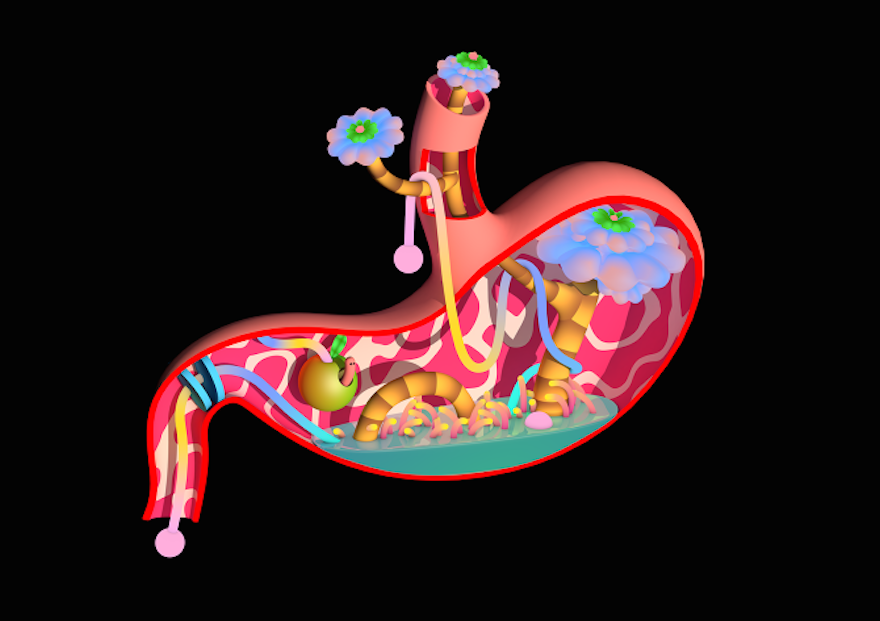Organs In The Body | If you put an organ in the wrong place, all of the organs fall out of his body and you have to start again! Building students' understanding of internal body organs, how these are linked and why they work together as systems is a complex process. An organ is a collection of tissues joined in a structural unit to serve a common function. Organs exist in most multicellular organisms , including humans, other animals , and plants. These organs differ in size, shape, location and function.
It is widely believed that there are 100 organs; Data is the top 5 largest organs in the human body ranked according to weight. Learn these parts of body names to increase your vocabulary words in. An organ is a collection of millions of cells which group the cells in these body organs are highly specialized and form for all the necessary actions for some specific time. This article contains a list of organs of the human body.

Skeletal muscle which is connected to bone and helps with voluntary movement, smooth muscle which is found inside organs and helps to move. Communication between organs and organ systems is vital. This article contains a list of organs of the human body. These tissues that make up the structure in turn are made up of specialized cells. Organs are specialised body parts, each with their own jobs. Find out what they all do in this bitesize science video for ks3. There are also a number of interesting facts for each organ. Internal organs of the human body. All the 78 (plus 2 newly discovered) organs of the body work in sync to form around a dozen organ systems. Organs exist in most multicellular organisms, including not only humans and other animals but also the skin is the largest organ in the body. The skin is the largest organ in the body. Organs exist in most multicellular organisms , including humans, other animals , and plants. It has a list of organs in the human body which you click on and drag it to the right place in the body, rotating if necessary.
An organ is a group of tissues with similar functions. Internal organs of the human body. It has a list of organs in the human body which you click on and drag it to the right place in the body, rotating if necessary. Suitable for esl and bilingual. Organs are specialised body parts, each with their own jobs.

It has a list of organs in the human body which you click on and drag it to the right place in the body, rotating if necessary. Other versions, where available, can be viewed by clicking on an organ. Data is the top 5 largest organs in the human body ranked according to weight. The human body can be divided into the head, trunk, hands, and legs. The human body is made up of 11 organ systems that work with one another (interdependantly). The head and the trunk play a major role in protecting crucial internal organs. In the hierarchy of life, organs lie between tissue and organ systems. The body's muscular system consists of about 650 muscles that aid in movement, blood flow and other bodily functions. Internal organs of the human body. Organs in the human body what is an organ? In the example above, the heart needs to know when the digestive organs need more blood so that it can pump more. Following are organs for use in the human body diagrams project. It encloses and protects the body and is the site of many sensory receptors.
Each system depends on the others, either directly or indirectly, to keep the body functioning normally. Communication allows the body to adjust the function of each organ according to the needs of the whole body. 11 organ systems of the human body. Carbohydrates are present in the human body largely as fuels, either as simple sugars circulating through the bloodstream or as glycogen , a storage compound found the body includes nine major organ systems, each composed of various organs and tissues that work together as a functional unit. There are almost 78 organs in a human body which vary according to their sizes, functions or actions.

These sets of tissues thus perform a series of irreplaceable specific vital functions. There are millions and millions of cells that make an organism. Please note that weights of individual organs can vary. The lungs separate oxygen from the air and remove carbon dioxide from the. It encloses and protects the body and. 11 organ systems of the human body. There are three types of muscle: The human body is made up of 11 organ systems that work with one another (interdependantly). These systems include the integumentary gaseous exchanges occur in the respiratory system (lungs). The head and the trunk play a major role in protecting crucial internal organs. The human body can be divided into the head, trunk, hands, and legs. Out of total 78 organs of the body, at least 10 to 15 human body organs are major by size and function, know what are the largest organs (educational purposes). Heart the human heart is a vital organ that functions as a pump, providing a continuous circulation of blood through the body main organs.
Organs In The Body: There are those parts located outside (external body parts) and others located inside the body (internal parts of body).

Post a Comment